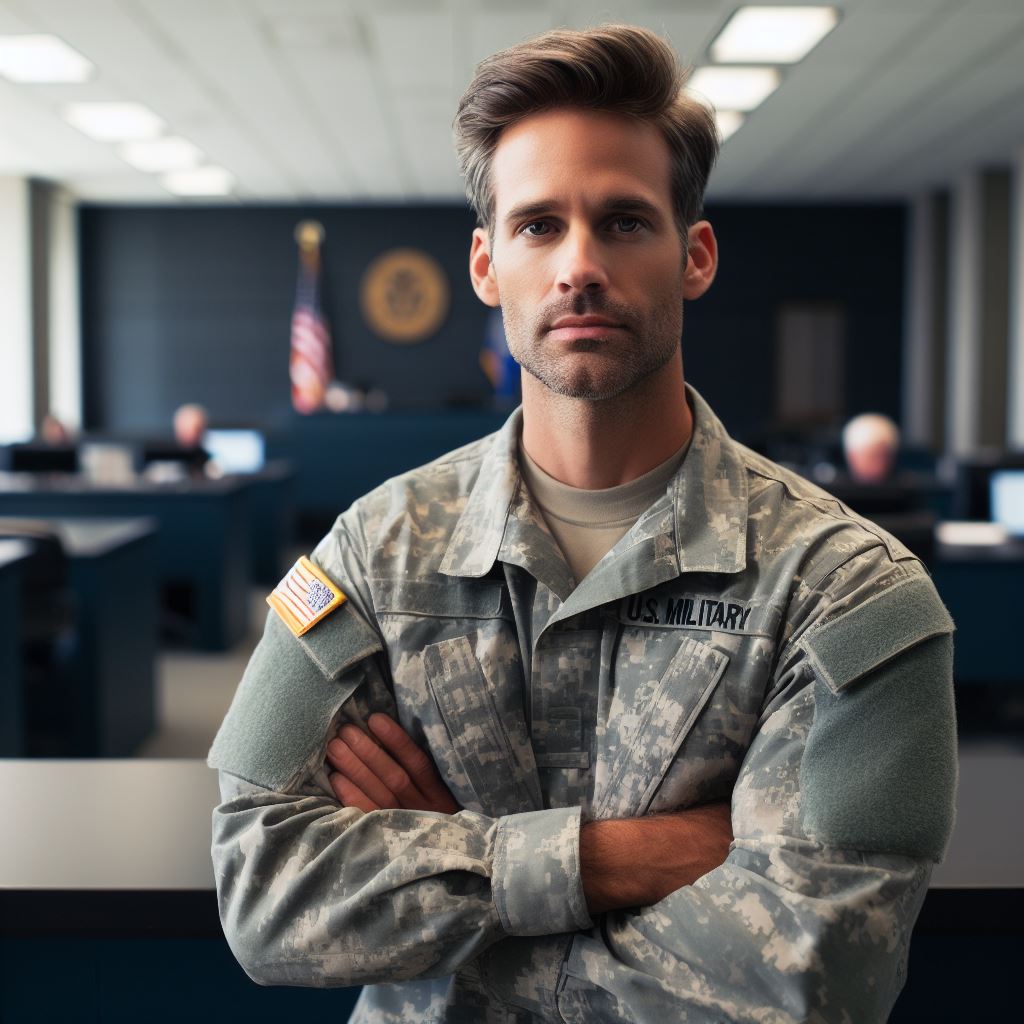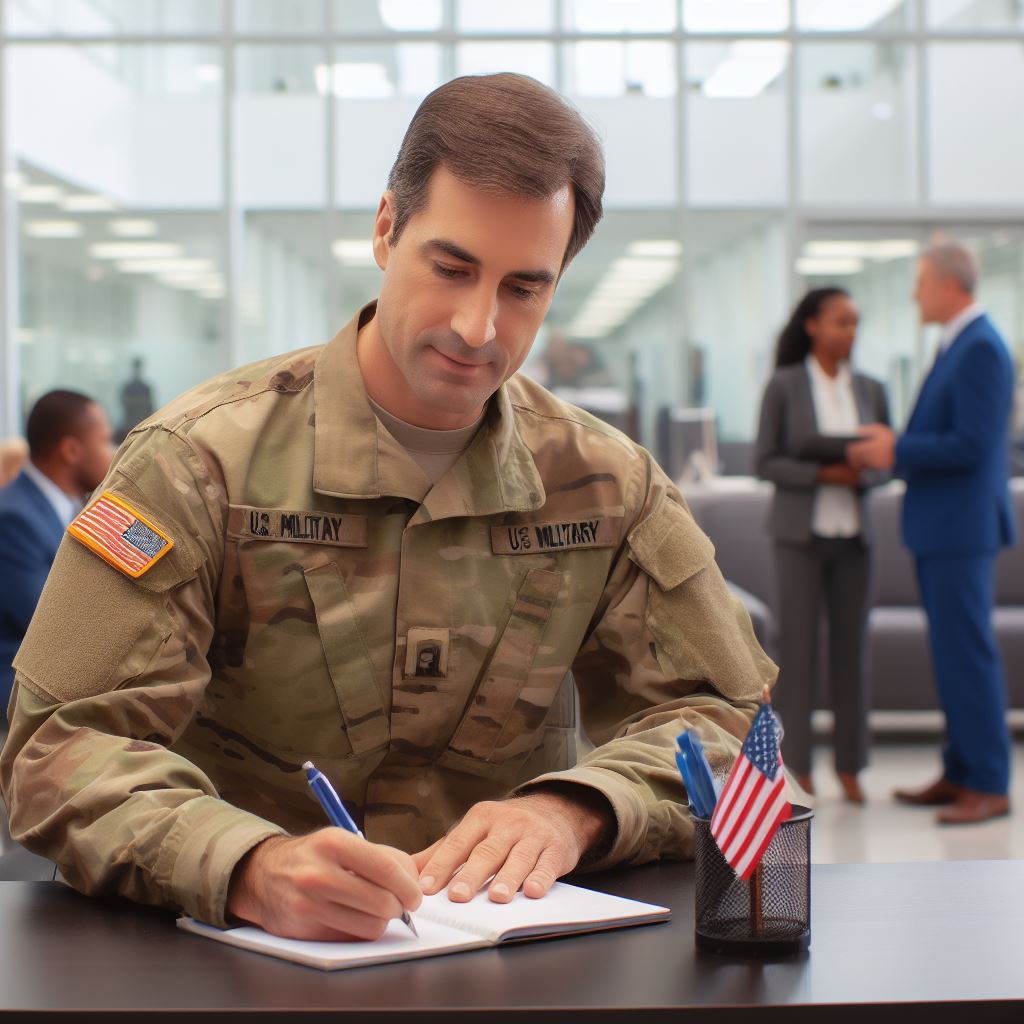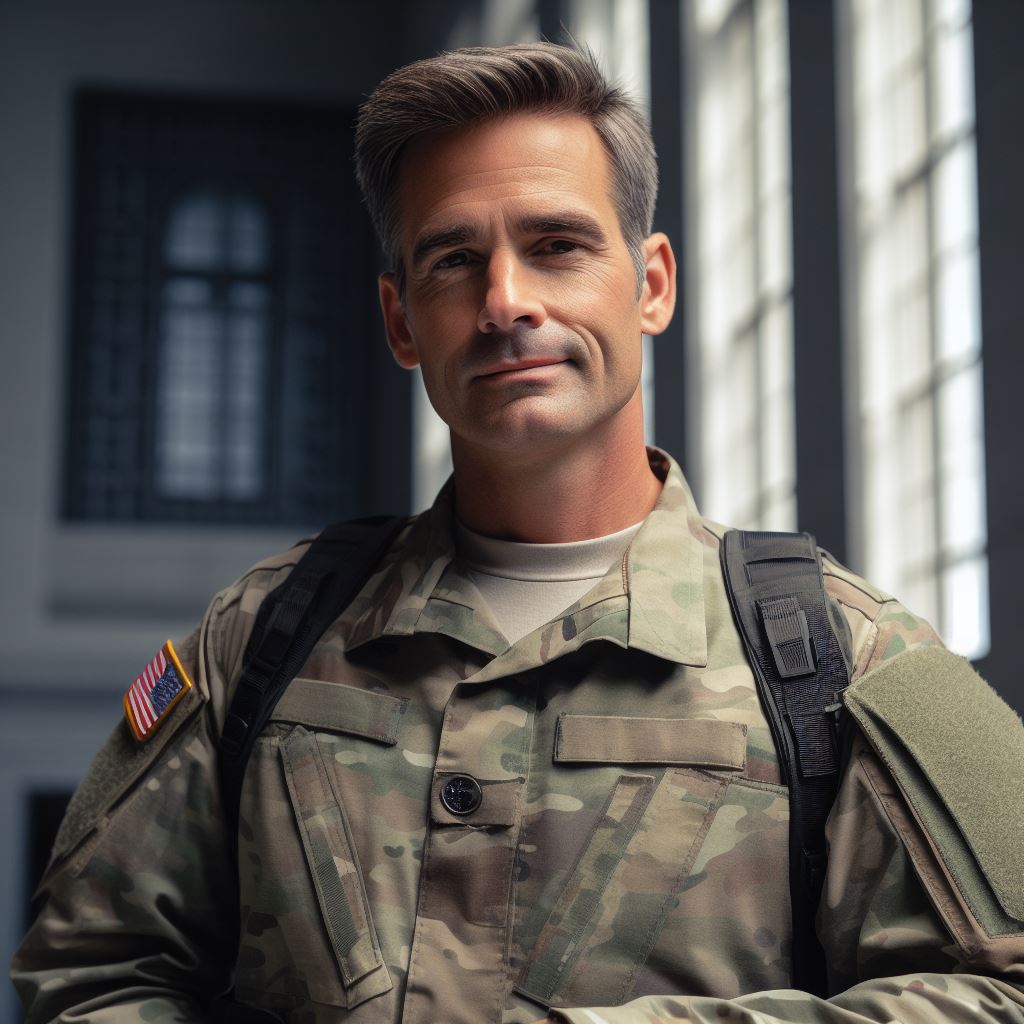Introduction
A. Definition and significance of military uniforms
Military uniforms have played a vital role in the history of warfare.
They not only serve as a means of identification but also convey important messages about the wearer and the organization they represent.
The significance of military uniforms lies in their ability to create a sense of unity, instill discipline, and foster a strong esprit de corps among troops.
B. Overview of the topic
The topic of the evolution of military uniforms through the ages encompasses a wide range of time periods, from ancient civilizations to modern times.
By examining the changes in military uniforms, we can gain insights into the development of military tactics, technology, societal norms, and cultural influences.
Throughout history, military uniforms have undergone significant changes in design and functionality.
In ancient times, soldiers often wore simple garments that provided minimal protection and were primarily intended for identification purposes.
As warfare became more advanced, military uniforms evolved to accommodate the changing needs of armies.
From the introduction of armor and helmets in medieval times to the development of camouflage patterns in the 20th century, military uniforms have adapted to the ever-changing nature of warfare.
The evolution of military uniforms also reflects societal norms and cultural influences.
For example, during the Napoleonic era, the French army’s distinctive uniforms reflected the power and grandeur of the empire.
In contrast, the British Redcoats symbolized the discipline and professionalism of the British army.
In more recent times, military uniforms have become more functional and practical, reflecting the demands of modern warfare.
Basically, the evolution of military uniforms through the ages is a fascinating topic that sheds light on the development of military tactics, technology, societal norms, and cultural influences.
By studying the changes in military uniforms, we can gain a deeper understanding of the complexities of warfare throughout history.
Ancient Era
A. Early forms of military uniforms
Military uniforms have evolved significantly throughout history, with ancient civilizations paving the way for the design and functionality of uniforms we see today.
During the ancient era, military uniforms existed in various forms, each serving a particular purpose and reflecting the society they belonged to.
The early forms of military uniforms were primitive yet effective.
Soldiers adorned themselves with clothing and armor that provided protection on the battlefield.
These garments were carefully crafted to enhance soldiers’ capabilities, allowing them to better perform their duties and stay safe in combat.
B. Ancient civilizations
Ancient civilizations such as Egypt, Greece, and Rome had their unique military uniform traditions.
1. Egypt
In Egypt, uniforms served as a way to differentiate between different military units and ranks.
Soldiers wore specific clothing and armor, which allowed commanders to identify their troops quickly and give orders accordingly.
The style and intricacy of these uniforms varied based on the soldier’s rank and status within the military hierarchy.
2. Greece
In Greece, soldiers wore distinct armor and clothing based on the city-state they belonged to.
The uniforms of Spartan soldiers, for example, were iconic, representing their disciplined and militaristic society.
These uniforms were designed to instill a sense of unity among the soldiers and differentiate them from their adversaries on the battlefield.
3. Rome
Roman military uniforms were known for their grandeur and symbolism.
They displayed intricate details, such as distinctive helmets, breastplates, and tunics.
These uniforms not only reflected the might and power of the Roman Empire but also served as identification markers on the battlefield.
The symbols and decorations enabled soldiers to recognize their comrades and coordinate their movements efficiently.
C. Influencing factors on uniforms
Several factors influenced the evolution of military uniforms throughout the ancient era.
1. Climate and environment
The climate and environment played a crucial role in determining the design and materials used in uniforms.
Soldiers in colder regions required heavier and more insulated clothing, while those in desert regions needed lightweight and breathable attire.
2. Social hierarchy and status
Social hierarchy and status also played a significant role in shaping the design and quality of military uniforms.
Higher-ranking officers often wore more ornate and luxurious uniforms, emphasizing their authority and position within the military structure.
This distinction helped maintain discipline and established a clear chain of command during battles.
3. Symbolism and identification
Symbolism and identification were critical aspects of ancient military uniforms.
Unique symbols and insignia were displayed on uniforms to ensure easy recognition of friendly soldiers and distinguish them from the enemy.
These symbols helped soldiers to coordinate their movements and stay organized during chaotic and fast-paced battles.
Generally, the ancient era witnessed the emergence of military uniforms that laid the foundation for the uniforms we see today.
These uniforms served practical purposes, such as protection and functionality, while also reflecting the social and cultural values of ancient civilizations.
Factors like climate, social hierarchy, and symbolism played crucial roles in shaping the design and usage of military uniforms throughout this period.
Read: A Day in the Life of a U.S. Army Soldier: Real Stories
Medieval and Renaissance Periods
A. Armor and Chainmail
- Types and Materials: Medieval armor varied from gambesons to full plate, made of steel, iron, or leather.
- Evolution of Protection: Innovations improved defense, transitioning from chainmail to articulated plate armor.
B. Development of Distinctive Clothing
- Heraldry and Family Emblems: Emblazoned shields and surcoats displayed family crests for identification.
- Formation of Military Units: Uniforms indicated allegiance, heralding the beginning of organized military attire.
C. Influence of Chivalry and Courtly Culture
- Elite Knights and Their Attire: Lavish attire distinguished knights; heraldry adorned their armor and clothing.
- Decorative Elements and Fashion Trends: Elaborate designs, colors, and fabrics reflected fashion trends in military garb.
During the Medieval and Renaissance eras, military uniforms underwent significant transformations.
Armor and chainmail diversified in types and materials, evolving from basic protection to sophisticated defense mechanisms.
Transform Your Career Today
Unlock a personalized career strategy that drives real results. Get tailored advice and a roadmap designed just for you.
Start NowAdditionally, the development of distinctive clothing marked a shift toward organized military units.
Heraldry and family emblems became integral, serving as identification symbols and emphasizing allegiance within military ranks.
The influence of chivalry and courtly culture was evident in the attire of elite knights.
Their clothing and armor were not only functional but also symbolized status and prestige, adorned with decorative elements and personalized emblems.
Fashion trends were reflected in military garments, with elaborate designs and luxurious fabrics signifying the evolving tastes of the time.
This era was not just about defense but also about identity and fashion, where military uniforms became a canvas for heraldic symbols and cultural expressions, reflecting the changing dynamics of warfare and society.
Read: Physical Fitness Standards and Tips for U.S. Security Guards

Age of Enlightenment and Industrial Revolution
A. Transition from traditional warfare
During the Age of Enlightenment and Industrial Revolution, the nature of warfare underwent significant changes.
Traditional methods of combat gave way to new technologies and strategic approaches.
One of the most significant transformations during this period was the introduction of firearms.
The development of guns drastically altered the battlefield, shifting the dynamics of warfare.
Armies had to adapt their uniforms for protection against bullets and other projectiles.
In addition to new weapons, military strategies evolved.
Commanders had to rethink their tactics to accommodate the capabilities and limitations of firearms.
This led to changes in how uniforms were designed and worn in battle.
B. Uniform standardization
With the emergence of national armies, a need for uniform standardization arose.
Differentiating between friendly and enemy forces became crucial.
National armies began adopting standardized colors, designs, and regulations for their uniforms to enhance identification and cohesion.
This marked a shift towards a more organized and disciplined approach to warfare.
C. Impact of technological advancements
Technological advancements also had a significant impact on military uniforms during this era.
Improved materials, such as stronger fabrics and metal armor, provided better protection for soldiers.
Uniforms were redesigned to incorporate these advancements, ensuring the safety and comfort of troops.
Furthermore, the integration of rank insignia and badges became prevalent during the Age of Enlightenment and Industrial Revolution.
These symbols allowed for easier identification of commanding officers and facilitated the chain of command on the battlefield.
Soldiers could quickly recognize their superiors and follow their orders effectively.
The Industrial Revolution also introduced mass production techniques, allowing for greater uniform availability.
This meant that armies could equip larger numbers of soldiers more efficiently, further contributing to the standardization of uniforms.
Overall, the Age of Enlightenment and Industrial Revolution brought about significant changes in military uniforms.
The transition from traditional warfare to the use of firearms required adaptations in design and materials.
Standardization became crucial with the emergence of national armies, leading to the adoption of specific colors, designs, and regulations.
Technological advancements improved protective gear and facilitated rank recognition.
The evolution of military uniforms during this period showcases the ever-changing nature of warfare and the ability of armies to adapt to new challenges.
Read: Balancing Vigilance and Courtesy: A U.S. Security Guard Challenge
Transform Your Career Today
Unlock a personalized career strategy that drives real results. Get tailored advice and a roadmap designed just for you.
Start NowFind Out More: The Role of Community Policing in Building Trust
Modern Era
A. World War I and II
1. Introduction of camouflage uniforms.
The onset of World War I brought about significant changes in military uniforms.
One of the most notable changes was the introduction of camouflage uniforms.
This innovation was driven by the need for soldiers to blend into their surroundings, making it harder for the enemy to spot them.
2. Adaptation to trench warfare and chemical attacks.
Trench warfare and the use of chemical weapons were dominant features of World War I.
In response to these new challenges, military uniforms had to evolve.
Soldiers wore gas masks and protective clothing to mitigate the effects of chemical attacks and the hazardous conditions in the trenches.
B. Post-war developments
1. Transition to more practical and functional designs
After the conclusion of World War II, military uniforms underwent further transformations.
Practicality and functionality became key considerations for designers.
The focus shifted towards creating uniforms that provided better protection, mobility, and comfort for soldiers.
2. Integration of specialized gear (e.g., bulletproof vests, helmets)
Advancements in technology led to the integration of specialized gear into military uniforms.
Bulletproof vests and helmets became standard in many armies, enhancing the safety of soldiers on the battlefield.
C. Contemporary military uniforms
1. Unique characteristics of various countries
In the modern era, different countries have distinct styles and features in their military uniforms.
These variations often reflect cultural and historical influences.
For example, the British military is known for its iconic red coats, while the United States military adopts a more practical and camouflage-oriented approach.
2. Role of symbolism and national identity
Military uniforms play a crucial role in symbolizing national identity and traditions.
They serve as a visual representation of a country’s military prowess and honor.
In many cases, significant symbols and emblems are incorporated into the design to convey a sense of pride and unity among soldiers.
In the end, the modern era transformed military uniforms by introducing camouflage, adapting to new warfare tactics, integrating specialized gear, and representing national identities.
These changes were driven by the need for practicality, functionality, and symbolization.
Military uniforms continue to evolve, reflecting the ever-changing nature of warfare and the importance of national identity in armed forces.
Read: Veterans Transitioning to Security Roles: A Guide for the U.S. Market
Conclusion
A. Recap of the evolution of military uniforms
Military uniforms have gone through significant changes throughout history, adapting to the needs and advancements of warfare.
B. Importance in reflecting military history and progress
These uniforms serve as a visual representation of military history, reflecting the technological, cultural, and strategic advancements of each era.
C. Final thoughts on the continued evolution of military uniforms.
The evolution of military uniforms is an ongoing process that will continue to adapt to the ever-changing nature of warfare.
It is crucial for military forces to prioritize functionality, protection, and identity in their uniform designs.
As technology advances, the integration of smart textiles and advanced materials may become more prominent in future uniforms.
Maintaining rich traditions and symbolism in military uniforms is vital.
This fosters soldier pride, unity, and aids external understanding of historical context and armed forces’ purpose.
[E-Books for Sale]
The Big Book of 500 High-Paying Jobs in America: Unlock Your Earning Potential
$19.99 • 500 High-Paying Jobs • 330 pages
Explore 500 high-paying jobs in America and learn how to boost your career, earn more, and achieve success!
See All 500 High-Paying Jobs of this E-Book
1001 Professions Without a Degree: High-Paying American Jobs You Can Start Now
$19.99 • 1001 Professions Without a Degree • 174 pages
Discover 1001 high-paying jobs without a degree! Unlock career tips, skills, and success strategies for just $19.99!




